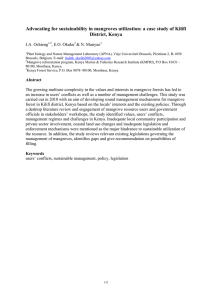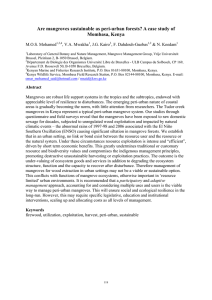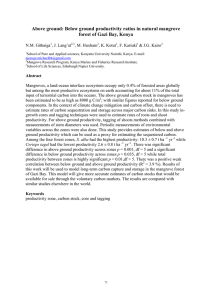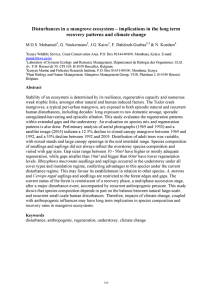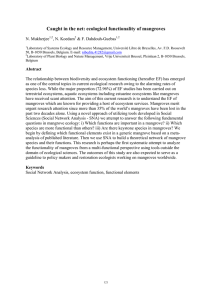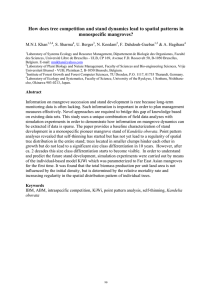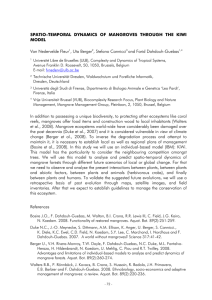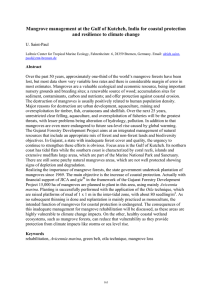Assessing the link between the local people and the mangroves... Mtwapa Creek, Kenya J.A. Ochieng
advertisement
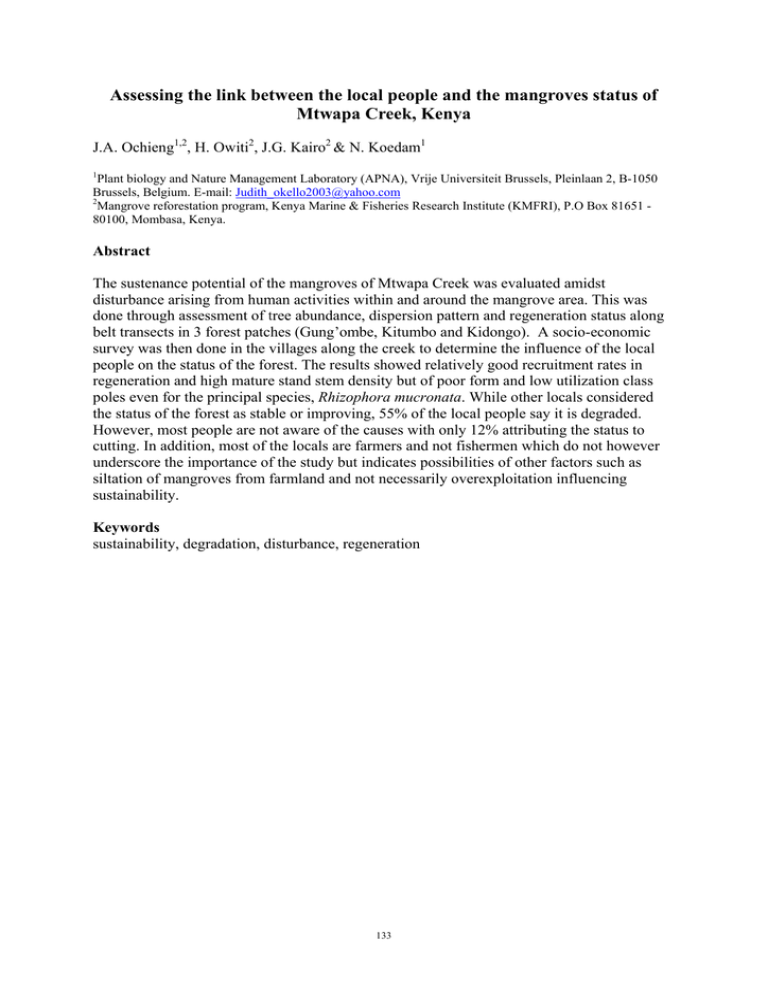
Assessing the link between the local people and the mangroves status of Mtwapa Creek, Kenya J.A. Ochieng1,2, H. Owiti2, J.G. Kairo2 & N. Koedam1 1 Plant biology and Nature Management Laboratory (APNA), Vrije Universiteit Brussels, Pleinlaan 2, B-1050 Brussels, Belgium. E-mail: Judith_okello2003@yahoo.com 2 Mangrove reforestation program, Kenya Marine & Fisheries Research Institute (KMFRI), P.O Box 81651 80100, Mombasa, Kenya. Abstract The sustenance potential of the mangroves of Mtwapa Creek was evaluated amidst disturbance arising from human activities within and around the mangrove area. This was done through assessment of tree abundance, dispersion pattern and regeneration status along belt transects in 3 forest patches (Gung’ombe, Kitumbo and Kidongo). A socio-economic survey was then done in the villages along the creek to determine the influence of the local people on the status of the forest. The results showed relatively good recruitment rates in regeneration and high mature stand stem density but of poor form and low utilization class poles even for the principal species, Rhizophora mucronata. While other locals considered the status of the forest as stable or improving, 55% of the local people say it is degraded. However, most people are not aware of the causes with only 12% attributing the status to cutting. In addition, most of the locals are farmers and not fishermen which do not however underscore the importance of the study but indicates possibilities of other factors such as siltation of mangroves from farmland and not necessarily overexploitation influencing sustainability. Keywords sustainability, degradation, disturbance, regeneration 133
